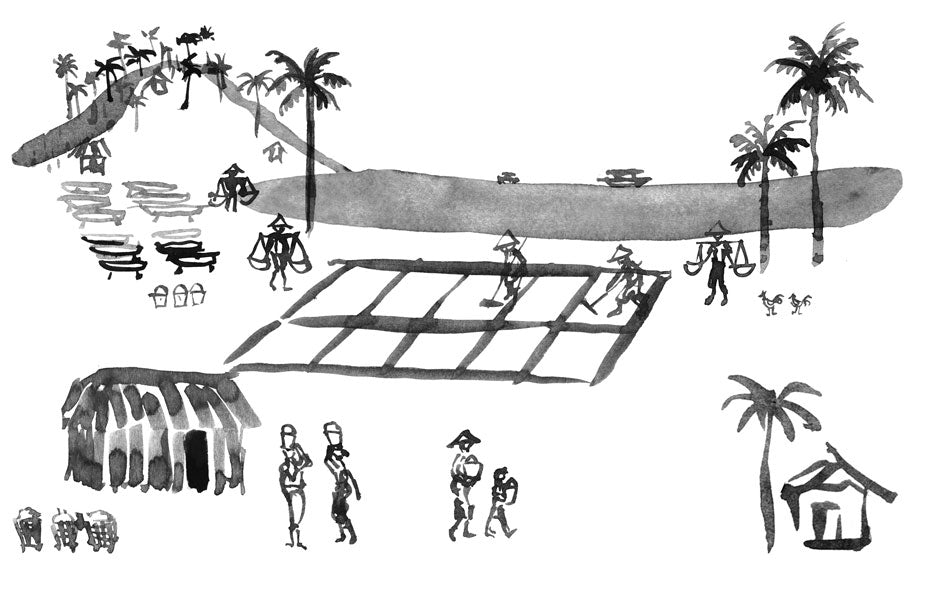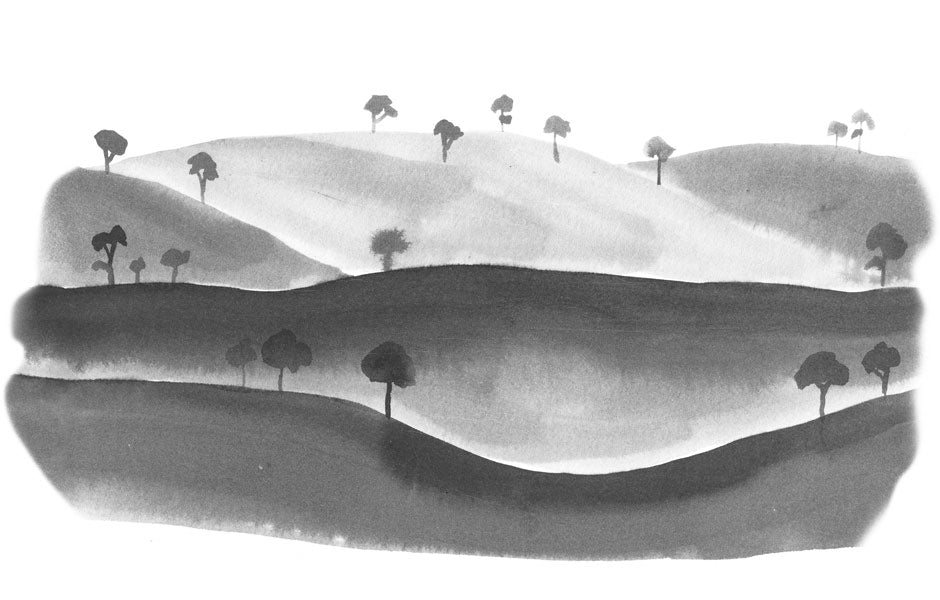
SPICE HISTORY
THE INDONESIAN ARCHIPELAGO
From the rise of the Srivijaya and Majapahit Empire
and the trading riches of Constantinople
and Venice, to linking of Europe and Asia by ocean route, the discovery of the American continent and the first
circumnavigation of the globe, Indonesian spices have
shaped the world we know
today. Select the buttons below to reveal key moments on our interactive spice history map:
- ● ⚐ East Java & Co - Single Origin
- ★ Historic Events
-
INDONESIAN EMPIRES:
- SPICE TRADING ROUTES:
- EXPLORERS:

SRIVIJAYA EMPIRE
The Hindu-Buddhist kingdom of Srivijaya was the first unified kingdom to rule and dominate much of the Indonesian archipelago. From its powerbase in Palembang in Sumatra, the maritime kingdom controlled the Malacca Strait and the lucrative spice trade with the China and India from the 7th to the 13th century.

MAJAPAHIT EMPIRE
With the declining influence of the Srivijayan Kingdom came the rise of the Majapahit Empire, founded in 1293 after the defeat of the Melayu Kingdom and fighting off a Mongol invasion. At its peak, under the ruler Hayam Wuruk (1350-89), the Empire expanded across Java and gained control over much of present-day Indonesia as well as the Malay peninsula through military might.

MEDIEVAL TRADING ROUTES
Until the late 15th century Indonesian spices made their way to Europe via China, India, the Red Sea and the Levant facilitated by Arab traders and the Ottoman Empire allowing the merchants of Constantinople and Venice to amass vast fortunes. This all changed in the European Age of Discovery during which ground-breaking new maritime routes were established, spearheaded by Vasco da Gama in 1498.

VASCO DA GAMA
After a journey of almost a year, Vasco da Gama arrives in Calicut, India in May of 1498. He is the first European to establish a sea route to India and thereby connecting the West with the Orient. In 1511, the Portuguese conquer the Sultanate of Malacca and take control of the strategically important Malacca Strait before sailing east and establishing direct trade links with the Indonesian Spice Islands.
SINGLE ORIGIN
FROM ACROSS THE ARCHIPELAGO


Batudulang
Batudulang on the eastern island of Sumbawa is home to the indigenous Samawa communities. The tree lined highlands are the natural habitat of the giant Apis Dorsata bee. Sustainable harvesting of wild forest honey supports the indigenous communities and helps protect the native forests.
Mount Soputan
The north of Sulawesi is famous for its farm produce and cuisine. Mount Soputan is an active stratovolcano with an elevation of 1’784 meters. Over the last 600 years there have been 39 confirmed eruptions, making it one of Sulawesi’s most active volcanos.
Mount Kerinci
The Kerinci region is the cinnamon capital of Indonesia, if not the world. The lush forest of the Kerinci Seblat National Park surrounding Mount Kerinci is one of the last strong hold of the Sumatran tiger and rhinoceros. With an elevation of 3’805 meters, Mount Kerinici is the highest volcano in Indonesia.
Amed
Located on the tropical shores of East Bali, Amed has been historically renowned for its high-quality sea salt. In the 17th century Amed has been appointed as the salt producer to the King of the Karangasem Regency and today these traditional manufacturing techniques are protected by Designation of Origin.
Tesso Nilo
Located in the Riau Province in Sumatra, Tesso Nilo National Park covers an area of 83,068 hectares. Unfortunately, illegal logging and poaching are a constant threat to this pristine environment. Sustainable harvesting of raw forest honey by the indigenous communities is supported by NGOs and conservation organisation integral part to strengthen the protection of this unique place.
Mount Halimun
The cool and misty slopes of the Mount Halimun Highlands in West Java make a perfect environment to grow high quality tea. Grown on rich volcanic soil at an elevation of 800 to 1000 meters, the tea reflects the unique terroir of this part of Java.
Sukoharjo
Sukoharjo is located in the middle of mystical central Java lowlands that are producing some of the best crops in Indonesia. The cultural capitals of Solo and Yogyakarta are just around the corner and so is Semarang on the coast facing the Java Sea.
Mount Merapi
Mount Merapi is Indonesia’s most active volcano. Located in mystical central Java, the surrounding lowlands are producing some of the best crops in Indonesia. The cultural capitals of Solo and Yogyakarta are just around the corner and so is Semarang on the coast facing the Java Sea.
Lake Sentarum
Danau Sentarum National Park is one of the world’s most biodiverse lake system. Located in the heart of Kalimantan in the Kupuas Hulu Regency. The region is home to 240 species of fish, 237 bird, 143 mammals and 26 reptile species. And of course its also stunningly beautiful there.
Lampung
Located on the southern tip of Sumatra on the Sunda Strait, home to the infamous Krakatoa volcano, Lampung has a thriving agricultural sector. The 1883 eruption of Krakatoa was so violent that the explosions were heard as far as 3’110 km away in Perth Australia.
Tombatu
Located just around the corner from Mount Soputan, the Tombatu region grows excellent organic ginger. The north of Sulawesi is famous for its farm produce and cuisine. Mount Soputan is an active stratovolcano with an elevation of 1’784 meters.
Hulu Konaweha
The land and mountain forest along the Konaweha river in South Eastern Sulawesi are home to the indigenous Tolaki communities. Sustainable harvesting of wild forest honey supports the indigenous communities and helps protect the native forests.
Kendari
Kendari is located in South East Sulawesi and has a climate and topography perfectly suited to produces high quality pepper and ginger. Sulawesi has a unique biodiversity. Out of the more than 120 mammal species that can be found on the island, more than half are endemic to just Sulawesi, same for the more than 200 bird species.
Maserang
In the diverse, self regulating native rain forests ecosystems of Masarang in Sulawesi, the arenga palm tree grows naturally. Making arenga sugar produced from the sustainably harvested palm sap a sweet way to help protect Indonesia’s rainforests.OUR PHILOSOPHY
WE 💚 ORGANIC

NATURAL INGREDIENTS
We use the best quality natural and organic ingredients to make our products. We don't use any artificial additives and preservatives. As a result our products are tastier and healthier.

SUSTAINABLE FARMING
We believe in the importance of environmentally sustainable farming. We work with producers that apply sustainable organic farming techniques. Organic production means better produce and less damage to ecosystems.

SUPPORT LOCAL FARMERS
We work directly with local farmers to source our ingredients. These farmers are enthusiastic, knowledgeable and proud of their produce and that translates into healthy and tasty products.

RESPECT THE PRODUCE
We make good simple products using traditional farmhouse recipes and methods. To conserve most of nature’s goodness we believe it is important to respect and not over-process the ingredients.
Our Organic Certifications:




